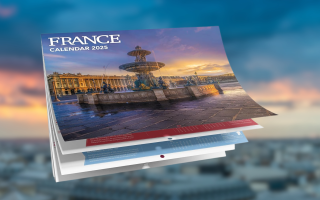Self-catering guide to Annecy
Victoria Trott gives the lowdown on the best food and wine shops and markets in the lakeside town in the Rhône-Alpes
For me, Savoyard food is all about comfort. You only have to look at the main ingredients of many of the dishes: cheese, ham, potatoes and cream. What is produced in the region is certainly the right food for the cold winters,” says Cynthia Caughey Annet, an American expatriate and keen amateur cook who has published an e-book of collected Savoyard recipes translated into English (www.frenchcomfortfood.com).
We are sitting outside the Buvette du Marché, the liveliest café-bar in Annecy’s old town. Around us, the Friday-morning market is in full swing: a tourist with a camera eyes the first strawberries of the season from the Rhône-Alpes region while an elderly woman with a shopping trolley buys saucissons for €10 from an Alpine farmer’s stall.
I have come to the capital of the Haute-Savoie département for a self-catering break with the intention of cooking and sampling some of the best regional produce. Cynthia and the old-town market (which is also held on Tuesdays and Sundays) have proved a good place to start.
Rue Sainte-Claire, with its terracotta-toned buildings and arched arcades, has hosted markets for centuries. Now restaurants vie for attention with bars, boutiques and food shops: the Boulangerie Artisanale, recognisable by its retro façade, is noted for its pain aux figues (fig bread), moelleux aux myrtilles (blueberry cakes) and croquants (thick cookies).
The area is dominated by a hill on top of which stands the Château d’Annecy built by the Count of Geneva in the 12th century. The square-turreted building houses the Musée d’Art Contemporain et d’Art Régional d’Annecy, the Musée Populaire Alpin, where visitors can see objects relating to rural life through the centuries, and the Observatoire Régional des Lacs Alpins, which traces the history and ecology of Alpine lakes. From the terrace, snow-dusted peaks soar into the sky behind the jumble of reddish roofs.
Rue Sainte-Claire soon becomes Rue de l’Île where one of the town’s best butchers, Boucherie Veyrat, is situated; chunky chicken skewers sit alongside diots (small Savoyard sausages), charcuterie and traditional cuts of meat. This part of Annecy is also known for its excellent ice-cream shops – the Glacier des Alpes has 45 flavours including génépi (the Alpine plant-based liqueur) and praline de Lyon (almonds caramelised in pink sugar).
However, cheese is the region’s most famous product, so I head to the shop of Pierre Gay, one of l’Hexagone’s leading fromagers and a Meilleur Ouvrier de France since 2001. I cross the narrow River Thiou and find myself in front of Annecy’s most photographed site – the Palais de l’Île. This medieval stone building, which sits alone in the middle of the water, has been a courthouse, a mint and a jail, but is now home to a small exhibition of the town’s architecture and heritage.
Pierre, wearing his trademark cap and overall, takes me to the pungent cheese cellar below his shop in the newer part of town. “The AOC cheeses in the Alpine region – that is Haute-Savoie and Savoie – are Beaufort, abondance, reblochon, tome des Bauges and the goat’s cheese chevrotin, while tomme de Savoie and emmental de Savoie also have protected status. But there are other excellent cheeses too. The bleu de Termignon is made in the summer by a female farmer in the Vanoise area who works as a ski instructor in the winter and is one of just four farmers making this cheese.”
A short walk away is Au Fidèle Berger, Annecy’s best-known tearoom. As well as selling cakes and desserts, this monument historique is famed for its chocolates: namely roseaux du lac (‘reeds from the lake’, dark chocolate batons filled with liqueur) and cloches d’Annecy (bell-shaped sweets filled with praline). The latter honour the town’s famous bellmaker Paccard, founded in 1796, which crafted France’s largest bell, the 19-ton La Savoyarde, for the Basilique du Sacré-Coeur de Montmartre in Paris.
When it comes to wine, the best person to speak to about Savoyard vintages is Albert Banon, proprietor of La Cave Filaterie. He tells me: “The Savoyard vineyards cover around 5,400 acres (2,185 hectares) and are mainly found towards Lac Léman (Lake Geneva), around Lac du Bourget and south of Chambéry. There are 23 grape varieties and three appellations: Vin de Savoie, which includes white, red and rosé wines and the uniquely white Roussette de Savoie and Seyssel.”
When asked to recommend something interesting and affordable, he says: “The Domaine des Ardoisières in the Massif de Bauges grows its vines under biodynamic conditions and produces around 30,000 bottles of vin de pays [now classified as indication d’origine protégée]. The white Cuvée Schiste is particularly good.”
A ‘must do’ on any trip to Annecy is a boat trip on the lake, the second largest in France and known as the cleanest in Europe because of its strict environmental controls. Its waters contain trout, perch and fera (a member of the salmon family), which are staples of the local restaurants as well as being sold in the town’s supermarkets and specialist fishmonger Pêcherie d’Armorique.
The Compagnie des Bateaux du Lac offers hour-long trips and dining cruises but I took an ‘omnibus’ tour which allows visitors to stop at lakeside villages, including chic Talloires, where I have arranged to meet Irish expatriate Joyce Lamy, who shows me around her new cookery school, Bocafina. English-speaking chef François Chatelain, who usually runs the ‘market cuisine’ course, teaches me how to make an ‘easy’ recipe for a beginner to Savoyard cooking: Biscuit de Savoie, which is actually a kind of sponge cake. (See page 73).
It is just as well Annecy has so many air, water and land-based activities to help burn off all the calories. Comfort food can be terrifying when you no longer fit into your trousers.
Share to: Facebook Twitter LinkedIn Email


